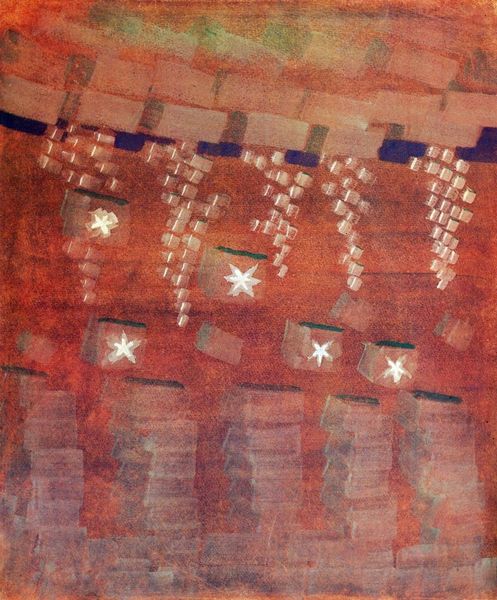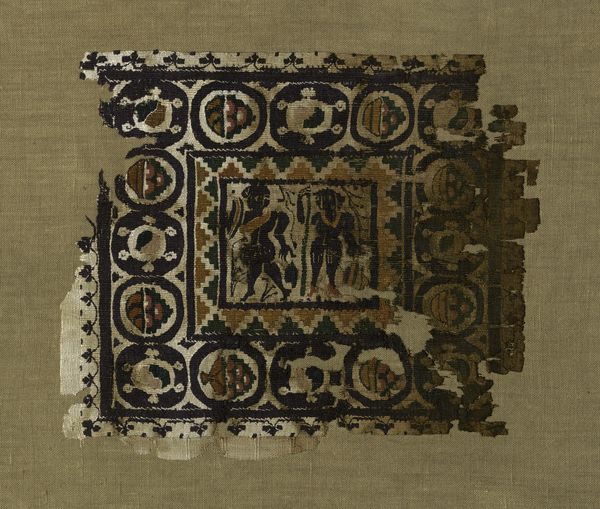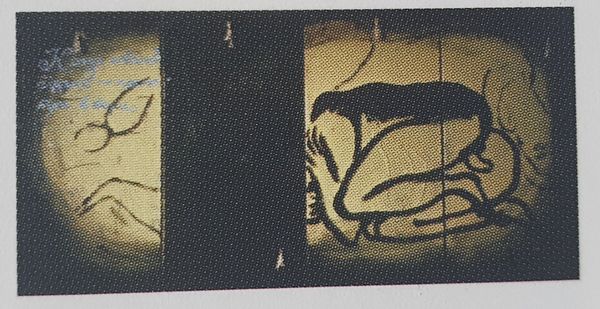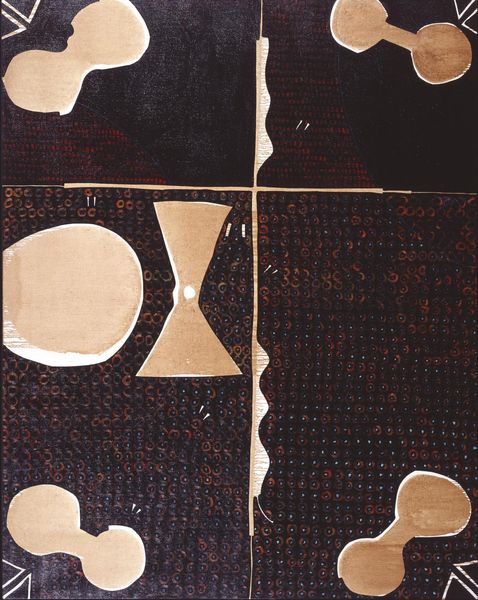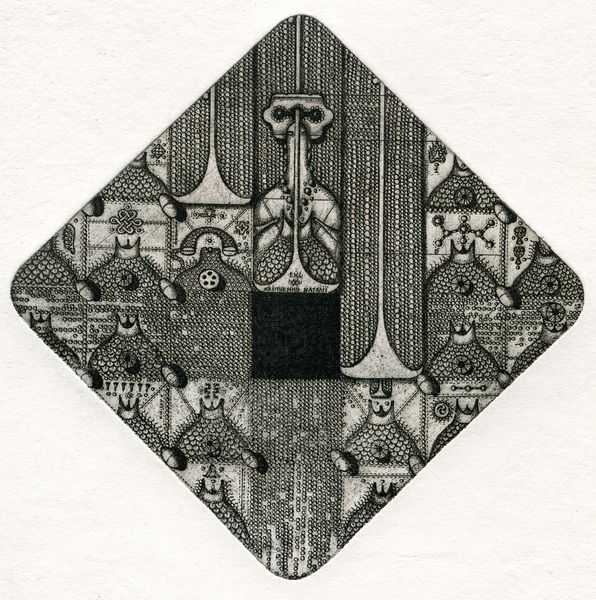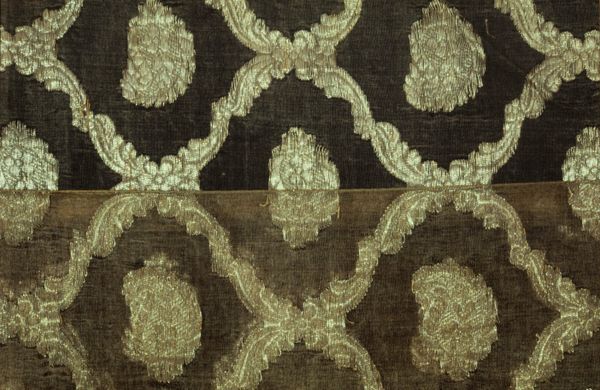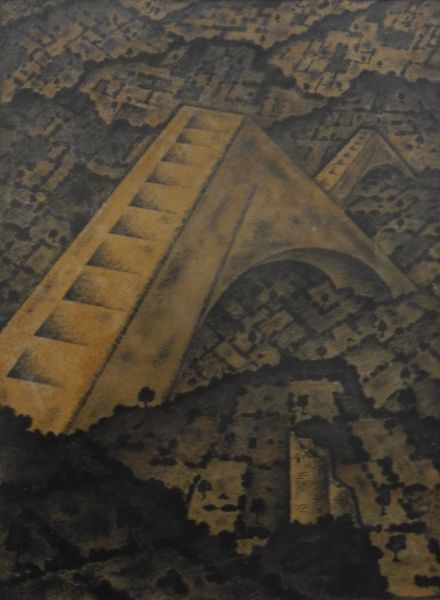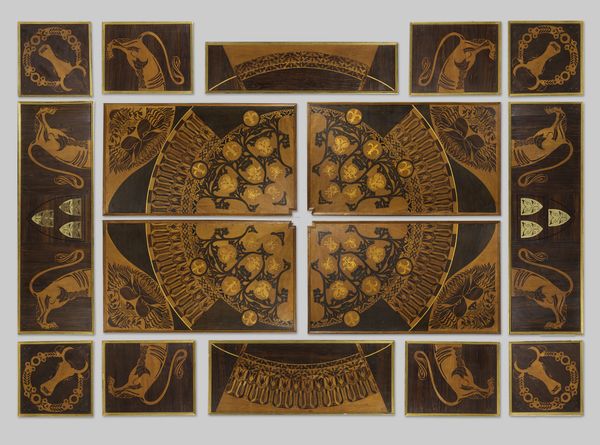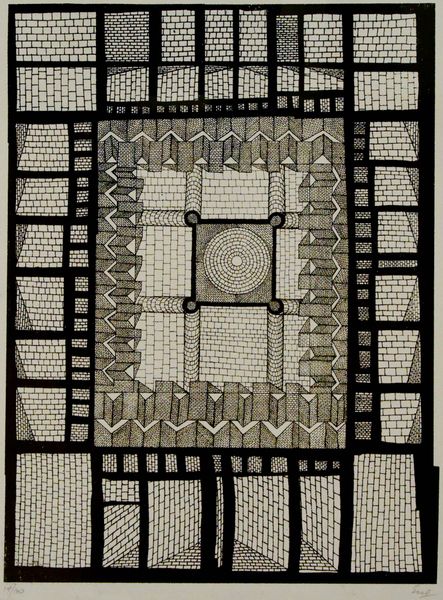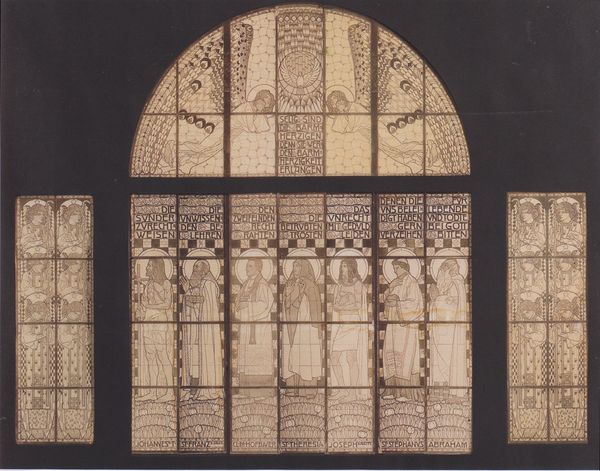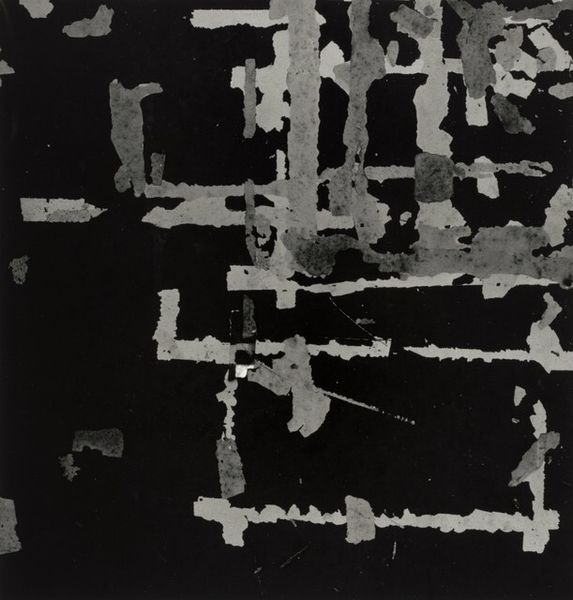
weaving, textile
#
weaving
#
textile
#
geometric
#
decorative-art
Dimensions: 152.7 × 164.4 cm (60 1/4 × 64 3/4 in.) Repeat: 12.6 × 11.7 cm (5 × 4 5/8 in.)
Copyright: Public Domain
Curator: Looking at this "Tablecloth," a textile made before 1905, likely woven, the initial impression is its geometric complexity and almost metallic sheen. Editor: It strikes me as opulent, yet the repetition hints at industrialized production methods rather than handcrafted luxury. I’m drawn to the grid-like structure and how that relates to ideas of control, labor, and the increasing mechanization of domestic life around the turn of the century. Curator: That's insightful. Considering Backhausen und Söhne’s involvement in the Wiener Werkstätte, they aimed to bridge the gap between industrial production and artistic design. How would you analyze the visual language of this piece through that lens? Editor: The pattern – alternating geometric motifs like circles, diamonds and stylized flowers – presents a controlled sense of nature. These repeating patterns likely reflect advancements in weaving technology and speak to consumer culture, specifically targeting the aspiring middle classes seeking affordable elegance in the products of mass production. It raises a question: To what extent is its accessibility diminishing any unique artistry? Curator: It reflects a shift in cultural values. Instead of solely unique objects for the elite, the early 20th century embraced accessible beauty. Pieces such as this “Tablecloth” became important in shaping public tastes and establishing a new visual order within middle-class households, providing a standardized style. Editor: Absolutely, mass production shaped social relations and behaviors; a patterned tablecloth can reinforce or question established societal norms depending on where it is produced and where it’s displayed. Now I see a tension – it is trying to bring luxury within reach, democratizing the art but potentially sacrificing individuality. Curator: Precisely, the "Tablecloth" is a beautiful demonstration of how design intersects with broader societal changes. It allows us to witness the evolving definitions of art, craft, and domesticity at the beginning of the 20th century. Editor: By scrutinizing production and consumer habits tied into objects such as this "Tablecloth", we uncover fascinating perspectives concerning values regarding aesthetics during pivotal times.
Comments
No comments
Be the first to comment and join the conversation on the ultimate creative platform.
